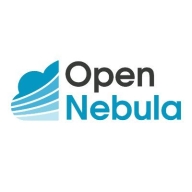

Cisco UCS Director and OpenNebula are both strong contenders in the cloud management platform space. Cisco UCS Director shows a notable advantage in support and integration, particularly for enterprises with existing Cisco infrastructures. Conversely, OpenNebula's flexibility and open-source nature offer a unique appeal for businesses seeking customization opportunities.
Features: Cisco UCS Director includes comprehensive automation and orchestration workflows, seamless integration with Cisco hardware, and extensive multi-cloud management capabilities. OpenNebula offers multi-hypervisor support, an intuitive open-source framework, and hybrid cloud functionalities.
Room for Improvement: Cisco UCS Director could enhance its adaptability for non-Cisco environments, simplify its setup process, and expand third-party integrations. OpenNebula might improve its user interface, streamline configuration processes, and enhance professional support services.
Ease of Deployment and Customer Service: Cisco UCS Director's deployment is streamlined for Cisco customers, though it might require additional effort for others. Its customer service is robust, fitting its enterprise focus. OpenNebula offers flexible deployment but may need more configuration. Customer service insights suggest room for improvement in support options.
Pricing and ROI: Cisco UCS Director involves higher upfront investment, aligning with its enterprise features and professional support. OpenNebula, being open-source, provides a cost-effective alternative, with potential savings offset by deployment complexity. The ROI for OpenNebula is attractive for those valuing flexibility and lower initial costs.
| Product | Market Share (%) |
|---|---|
| OpenNebula | 5.8% |
| Cisco UCS Director | 1.4% |
| Other | 92.8% |


| Company Size | Count |
|---|---|
| Small Business | 4 |
| Midsize Enterprise | 1 |
| Large Enterprise | 11 |
| Company Size | Count |
|---|---|
| Small Business | 7 |
| Midsize Enterprise | 6 |
| Large Enterprise | 3 |
Cisco UCS Director enables automated delivery of physical and virtual data center resources, empowering data centers to move at the speed of business.
OpenNebula provides the most simple but feature-rich and flexible solution for the comprehensive management of virtualized data centers to enable private, public and hybrid IaaS clouds. OpenNebula interoperability makes cloud an evolution by leveraging existing IT assets, protecting your investments, and avoiding vendor lock-in.
OpenNebula is a turnkey enterprise-ready solution that includes all the features needed to provide an on-premises (private) cloud offering, and to offer public cloud services.
We monitor all Cloud Management reviews to prevent fraudulent reviews and keep review quality high. We do not post reviews by company employees or direct competitors. We validate each review for authenticity via cross-reference with LinkedIn, and personal follow-up with the reviewer when necessary.